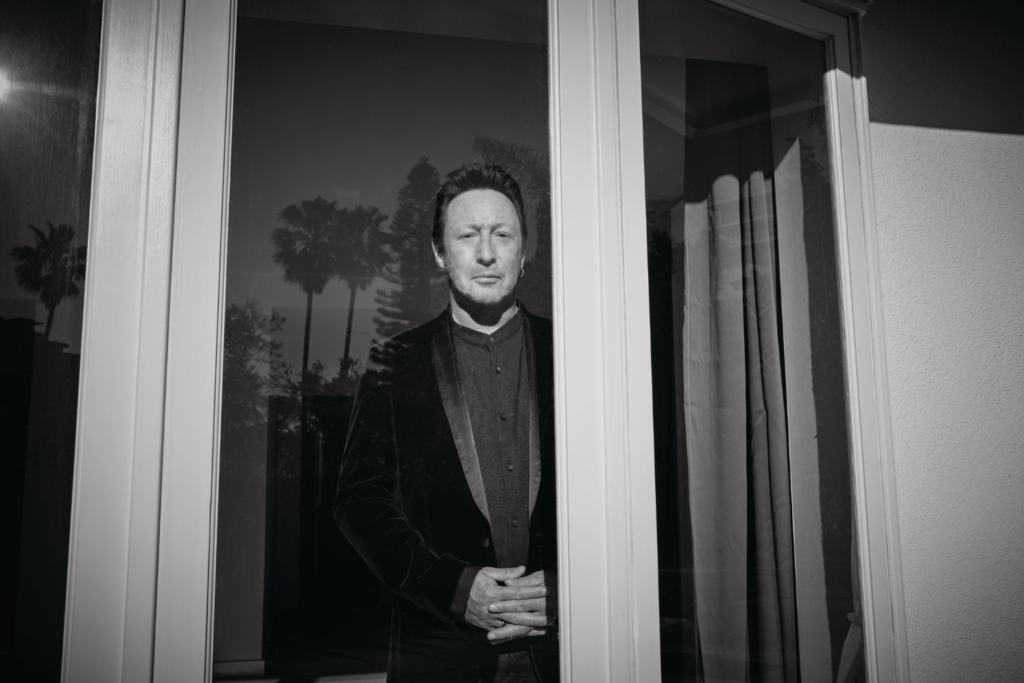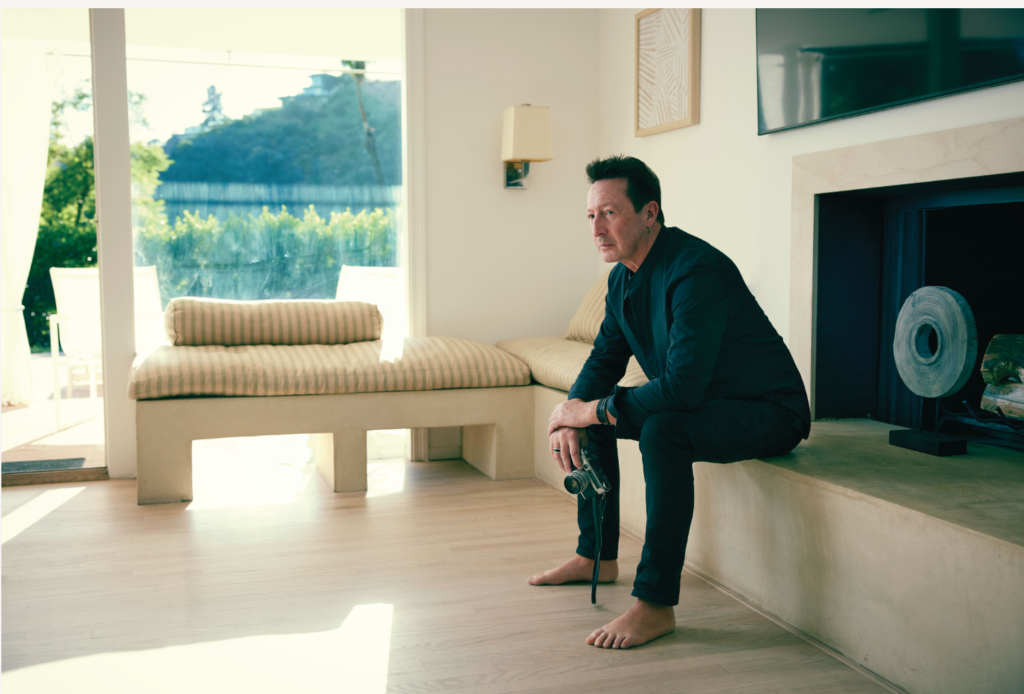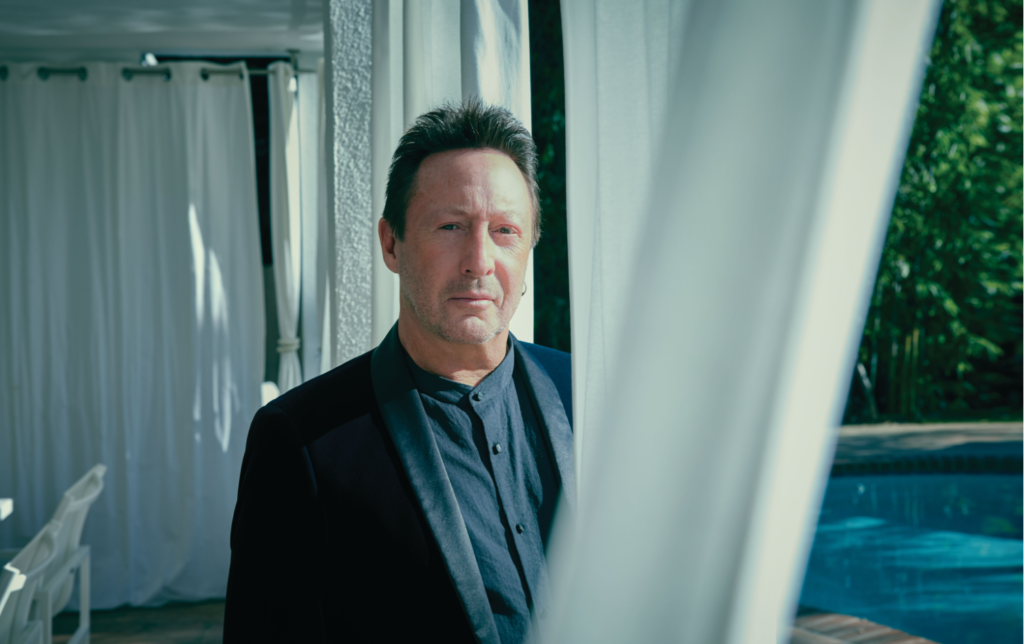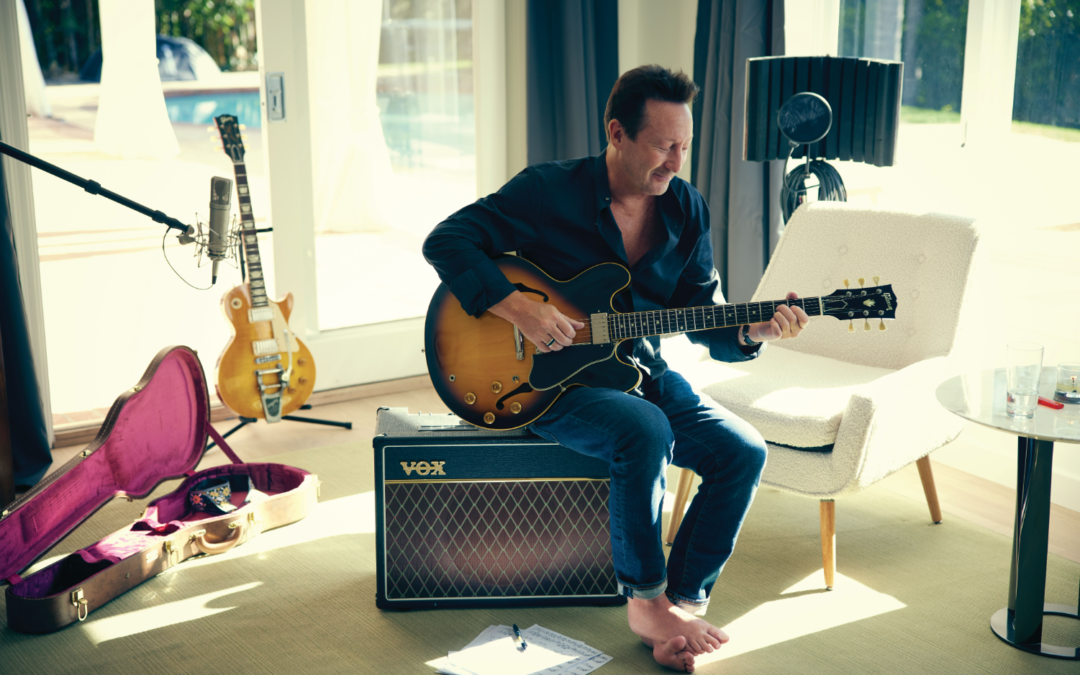Looking forward, and back, with Julian Lennon
photography by Robert Ascroft
REPOST from Spring 2022 issue
JULIAN LENNON IS PART OF A STORY THAT IS arguably one of the most famous in rock history. Though he follows in the footsteps of a legendary musical legacy, he has forged his own path, becoming a multi-talented, multi-hyphenate in the process. He is a photographer, musician, author, philanthropist, but as he says, “Listen, I’m just a human, being creative. That’s it. That really is it.” He has recently finished a new album titled Jude, and the first singles, Every Little Moment and Freedom, were released on April 8th, which was also his 59th birthday. It is his first new music release in 11 years. In addition, he is in an ongoing collaboration with Portia de Rossi and General Public to produce a collection of large-scale photography available through RH, and last year he published his fourth children’s book, The Morning Tribe. Add to that his work with his philanthropy, The White Feather Foundation and you have a full slate of creative endeavors to keep up with. In a wide-ranging series of interviews via Zoom, we discussed everything from his first camera (Cine 8) to the last song he sang along with on the radio (My Sharona, in the car), and everything in between.

THOUGH LENNON LIVES in Europe, he has also spent time in LA, most recently to complete production on his new album, Jude. In the midst of a busy schedule, we caught up with him at the home of photographer Robert Ascroft.
All photography by Robert Ascroft; photo assistant Benji Callot.
Lennon is a true Gen-Xer, toggling between pining for old-school analog and utilizing digital formats to his best advantage. We reminisced about the Sony Walkman (“It is really kind of sad that I don’t have one of the older ones, because Dad gave me one at one stage.”) and lamented the constant barrage of information via email. “I bumped into U2’s old manager, Paul McGuinness and we were sitting down having a little lunch and I said, ‘How do you do it? How do you deal with this?’ And he said, ‘Well, first and foremost, Jules, you’ve got to treat emails like it’s the office.’ And it is the office, but old school. You have to allow yourself breathing time to get on with what you want to do. Let everybody know you’re off for the day and check in at the end of the day.”
The album is a combination of new music and compositions that have been kicking around in one form or another for 30 years. “I thought the last album was really going to be the last album. I had kind of resigned myself to that fact. Then I got heavily involved in photography and that really occupied my time, and I fell in love with that.” He continues, “With music, there’s always been barriers, whether that’s management that I’ve worked with, or record companies, or the media that has not been supportive. So, I kind of had enough, but then as a creative you can’t stop twitching. So, I started thinking about four years ago, ‘I’d really like to do this…’”
Some of the tracks were recorded in home studios, and some are the product of collaborations with Lennon’s many musical friends. For a track called Gaia, he worked with pianist Bill Laurance, a member of their international music collective known as Snarky Puppy. “The only way I can describe what he does is a cross between a soundscape like Blade Runner, and Keith Jarrett. And to me, that’s pretty fascinating, and I love that kind of curious mix.” They worked out the details and Laurance recorded the song on the piano. When he envisioned a Parisian singer to add some vocals, he found Elissa Lauper on Instagram, who coincidentally lived not far from him. They talked about the concept, and he played her the song, and the next day she sent him vocals recorded on her iPhone. “It sounds like a 1930s, black and white movie or a radio show, and it was sultry and exotic, moving, romantic, and it was on her iPhone in front of a pair of speakers, with what sounds like an old piano playing. My jaw dropped, I had goosebumps. So, I decided to use that for the beginning of the song.”
Lennon then turned to an old friend, Paul Buchanan, the lead singer of a Scottish band, The Blue Nile. “Paul is one of my old mates, and we did some work in the ‘90s together.” During the lockdown they kept in touch via Zoom and Lennon proposed that Buchanan record some lyrics. “He said,‘Jules, I’m in Edinburgh, all the studios have closed, there’s nothing going on here.’ After hearing Elizabeth sing, I said, ‘Listen, do me a favor. You’ve got an iPhone? Headphones on, sing it into your iPhone six times.’ So, he did that, I edited it together, put it in place and you wouldn’t know.”

“I want to get out there again. I think most photographers would say, ‘Yeah, give me a travel plan, let me go somewhere.’
For this album, Lennon has signed with BMG, and is enjoying the creative freedom that comes with age and experience. “Always in the past, it was other people’s decisions, and although there’s a bit more work, at the end of the day it’s down to me, so I have to really be sure about what I want and that I’m doing it for the right reasons.” He feels supported by the team he has assembled for the music, the photography, and the foundation, and though he hasn’t committed to anything further than one album, he has given some thought to the future. “I don’t even want to say there’s another album or even touring at this point even though it’s a consideration. But if I do that, it would be tied in with The White Feather Foundation and we would do something that would help the local cities that we play. It would be tied in with a partial or full orchestra because I did a show back in the ‘90s with the Hong Kong Philharmonic Orchestra, and for me, that was the best show I ever did.”
Though music is at the forefront right now, the photography is still a passion. He says, “I can’t consider myself a photographer, really. I don’t like pigeonholing in any capacity, but I’m not a tech person when it comes to photography at all. For me, it’s very much about guerrilla photography. Any moment something can happen, and I’ve never been one to set things up. It just doesn’t appeal to me.” He has released and shown several collections, including portraits of U2 as well as travel to far-flung places. “I think the first time I really loved the idea of capturing moments, and because of the camera itself, was when Dad used to have a Polaroid SX-70 Land camera. I still have the original one that I had, and I believe it still works.” He continues, “I used to love high contrast black and white profile portraits that were very stark, very harsh. I still have those all folded away in a book somewhere. But I always loved that camera and I think that was probably the beginning of the end, really.”

“I’ve always been true to my gut, and true to my heart, so that has never changed musically, melodically, or otherwise. If it doesn’t feel right, I won’t go there.’
He really started to find his style during his years of travel. “Funnily enough, it was probably from all my journeying on the road 20 or 30 years ago. I didn’t sleep on planes very well. While everybody was asleep, I would be staring out of the window. So, I started taking pictures of clouds because I just thought they were so unique, so beautiful, one-offs, never going to happen again. And I loved the idea of having large pictures of clouds on my walls as well.”
The collaboration with Portia de Rossi and General Public allows him to reproduce some of his photos to be sold through RH. “I went into it asking, ‘What are you looking for?’ And because they wanted different things for different interior settings, I picked about 50 to start with.” Eventually they chose about 20 works to reproduce, and General Public, which specializes in reproducing art, created the large-scale prints. “It’s such a pleasure working with people that know what they’re doing and really do a great job, and are motivated, and driven, and excited to do this stuff.” Creating the collection for General Public has served another purpose as well. “It reminds me of what I’ve done. Especially with the Indigenous and Kogi, I get goosebumps. And you kind of forget when you’ve been locked down for two years that the world out there exists. So, this has been a positive reminder. I want to get out there again. I think most photographers would say, ‘Yeah, give me a travel plan, let me go somewhere.’”
He has been traveling lately, spending time in Los Angeles to complete the album. And while he was there, he attended the premier of Get Back,The Beatles documentary by Peter Jackson that covers the making of what would be the band’s final album, Let It Be. Lennon attended with his brother, Sean Ono Lennon, and while there he shared selfies on social media with Sean and Stella McCartney. Lennon revealed that seeing the documentary was emotional and inspired some new feelings about his father. “To see footage of my dad in that era—exactly as I remember him when I was a young boy—was surreal and meaningful in the best way. I was reminded of his wit, his friendships with his band mates, his mannerisms and all the wonderful idiosyncrasies that made him who he was, not to mention his incredible talent as an artist. It made me prouder than ever to be a Lennon.” He continues, “My brother Sean is one of my best friends in the world, so any time I get to spend with him is always a joy. We have always been close, contrary to the nonsense you see in the media, and it was hard to be apart from him throughout the pandemic. Seeing Stella and the others is always a great joy as well, because though we’re all living our own lives scattered across the globe, we’ll always have a special bond.”
For now, he is busy wrapping up the details on the album release, which will roll out in a series of singles first, with the full album to be released in September on his mother, Cynthia’s birthday. “I wanted the the vinyl of the album to be released on mum’s birthday in September. I really wanted it to be kind of this quirky family affair where it’s more of a personal journey and connection, so I just thought, ‘Why not? Why not?’ Timewise, it works out and it just made sense to me. I like to latch onto dates and memories just to give something a little more depth.”
Though Lennon has lived in a fishbowl of attention, he is humble, intellectually curious, and authentic, something that comes across in everything he does, but especially in his new music. “I’ve always been true to my gut, and true to my heart, so that has never changed musically, melodically, or otherwise. If it doesn’t feel right, I won’t go there.” DT

